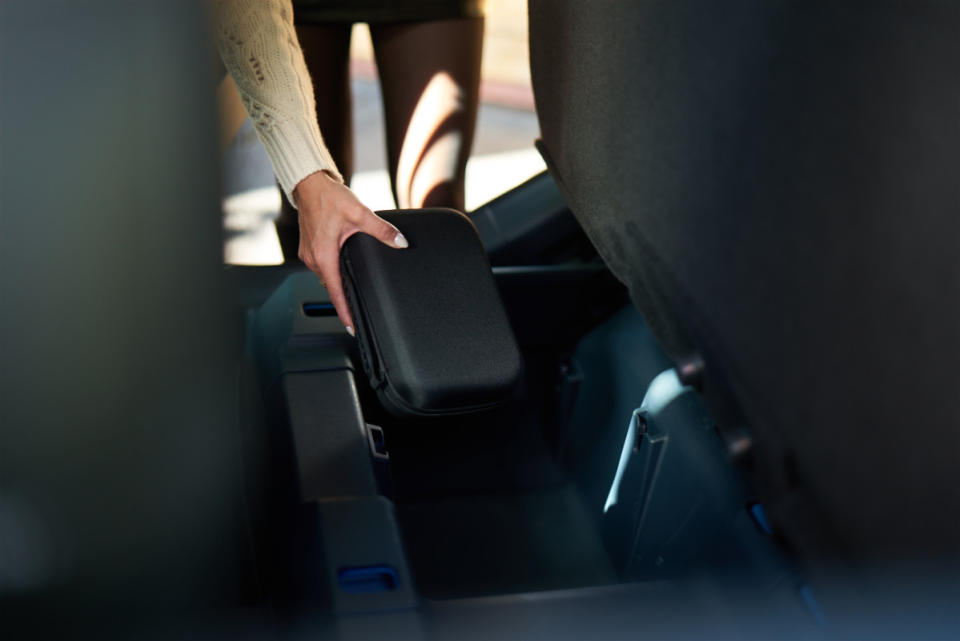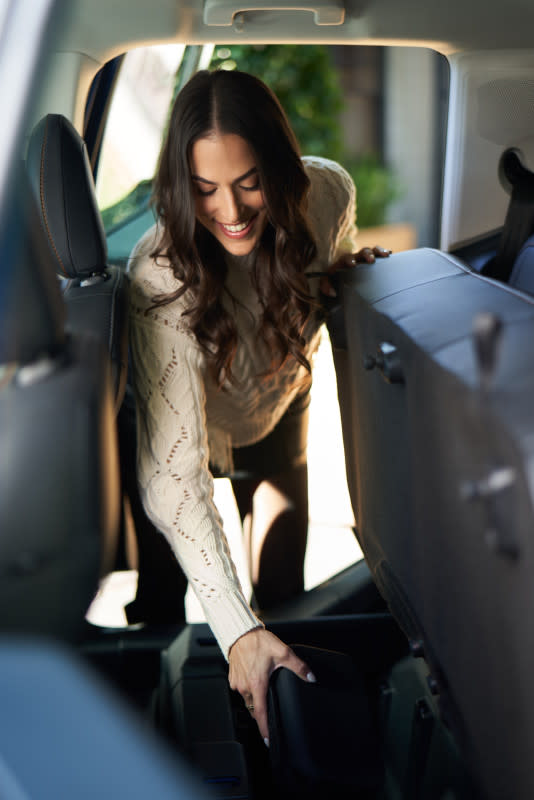How to Make a Winter Emergency Kit for Your Car
Here's your annual reminder: As a winter weather driver, always be prepared for an emergency on the road. Building a winter car emergency kit that can remain in your vehicle can help you navigate a full range of winter road incidents. Put your mind at ease and assemble a winter survival kit that can accompany you through harsh winter conditions.
When it comes to building a safety kit on your own, Janelle Cohen has lots of great ideas. As an expert organizer and author of “The Folding Book," she recently partnered with Kelley Blue Book to highlight this year’s Best Buy Awards. Cohen suggests including common items like a first aid kit, jumper cables, a portable charger, and a flashlight. She adds, "Create your kit to contain exactly what you need. A lot of times pre-made kits come with additional items that you will never need or use. This is taking up extra space that you could be utilizing. If creating your own feels too overwhelming, look at the premade kits and remove and replace any items that don’t feel practical to your needs."
Related: Are You Prepared for an Early and Severe Winter?
Why should you have a winter emergency kit in your car?
If you live in a cold climate with harsh winter weather (or you are planning to take a winter road trip), it’s so important to be prepared for an emergency. Whether your car slides off the road in an ice storm, you experience a collision, or you're stranded for some time, the critical items you packed can help you and other disabled vehicles you encounter along the way.
Familiarize yourself with your car’s built-in safety features, such as the Emergency Assistance Button (SOS), 24/7 Enhanced Roadside Assistance, and Automatic Collision Notification. Then, consider what else you need in your vehicle to keep you as safe as possible.

Janelle Cohen for Kelley Blue Book
Supplies For Your DIY Emergency Kit
A well-stocked winter driving kit can make unexpected emergencies less stressful. Think of it as a 72-hour kit. Everyone has different needs, but to get you started the experts at Kelley Blue Book suggest these essential items:
Antifreeze – Keep your fluid levels full to help regulate your car’s temperature.
Camping blankets – Keeping warm is essential if your car’s heating system fails.
Duct tape – Weatherproof tape can help with minor repairs.
Warm clothing – If you have to leave your vehicle or have wet clothes, keeping a change of clothes and winter boots may come in handy. Buying a reflective vest for your winter car kit is also helpful when navigating roadside emergencies.
First-aid supplies – Don’t forget bandages, gauze, skin ointments, etc.
Flashlights, reflective triangles, and LED road flares – Heavy snow flurries can obstruct your view and that of other drivers, even if it’s light outside. A flashlight is especially helpful for making roadside repairs in the dark. Don’t forget the extra batteries!
Gloves – Protect your hands from the elements when you’re stranded using proper gear.
Ice scraper – A windshield scraper is used to remove snow and ice. Even cheap scrapers do a great job without taking up much space.
Microfiber cloths – Have cloths or absorbent towels for cleanup as needed.
Spare cell phone charger – A portable battery makes it possible to keep your cell phone charged.
Collapsible shovel – Use a portable shovel to clear a path and help dig out of mushy ditches. A snow shovel might not fit in your kit, even if it's a foldable shovel, but it can lay across the floor of your backseat.
Cat litter – Use litter for traction beneath the tires if you get stuck.
Snacks – Have small non-perishable food items, like granola bars and protein bars, stocked to keep hunger at bay while waiting for help.
Snow brush – Make sure your view of the road is unobstructed, and remove snow from the car hood, roof, and trunk lid.
Tire gauge – Cold weather can adversely affect your tire pressure. (Also, keep the spare tire in your car in case you experience a flat tire during your travels.)
Tool kit – Packing a basic tool kit ensures you can always change a bolt or troubleshoot when needed.
Water bottle – Access to water is very important. Have bottled water or cardboard water cartons on hand for drinking and for other purposes in and around the vehicle.

Janelle Cohen for Kelley Blue Book
How to Organize Your Emergency Supply Kit
For maximum accessibility and convenience, keep your emergency items within arm's reach, whether they fit in the center console or on the floor behind the passenger seat. Cohen adds, "Keep your kit divided by category (first aid, mechanical, snacks, etc.) so it’s easy to find what you’re looking for. You can use Ziploc bags or plastic pencil cases to keep things separated and to take it a step further, I always recommend labeling so you can find things quickly."
